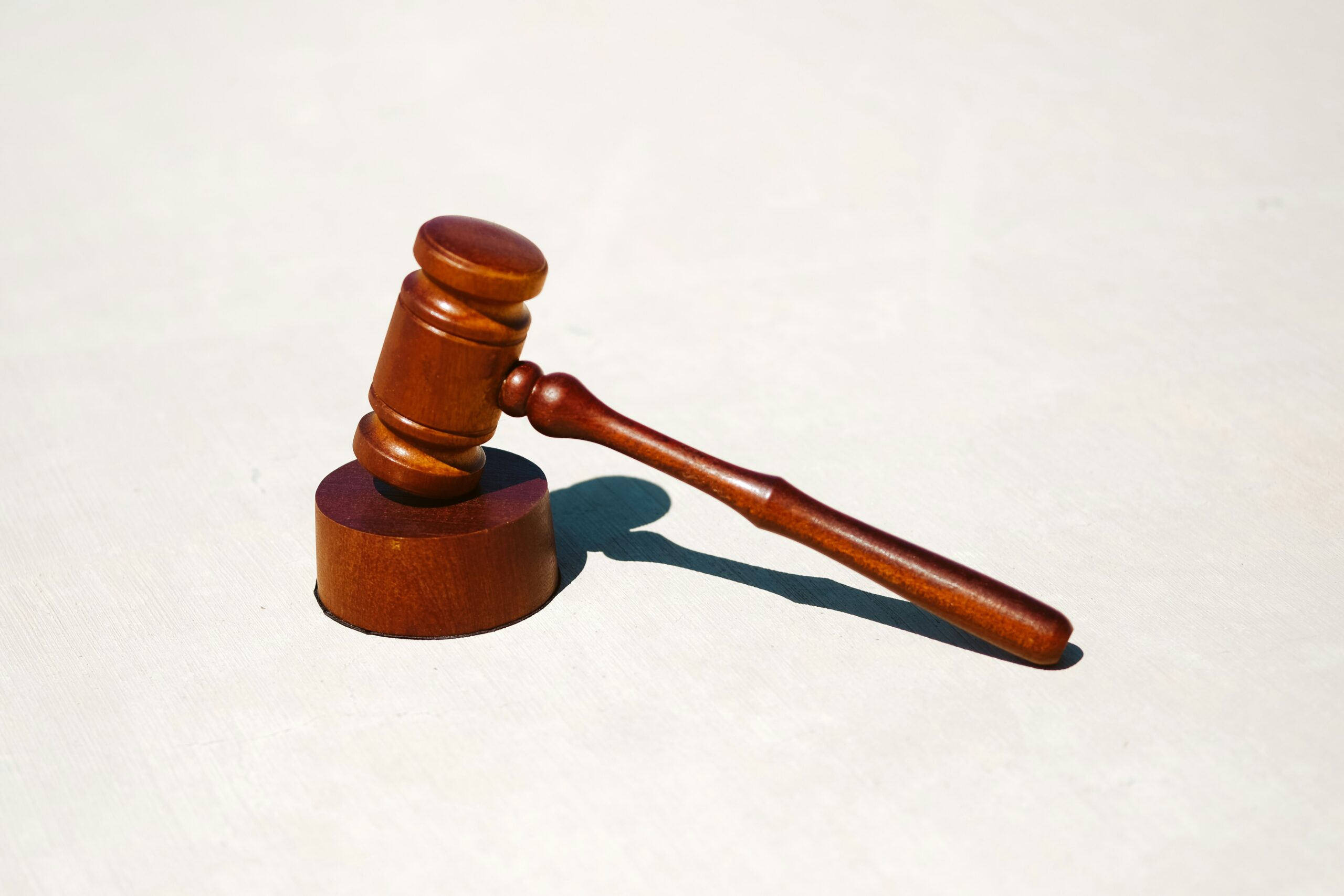The Mazur Case – A Discussion
Most of the legal profession have laboured under the impression that a Chartered Legal Executive has the same rights as a solicitor, including being able to conduct litigation, if working for a regulated entity.
In 2021, CILEX introduced a new framework, the CILEX Professional Qualification (CPQ), which introduced a pathway to becoming a CILEX Lawyer. CILEX Lawyers have practising rights. However, many ‘legacy’ CILEX qualifications, such as Chartered Legal Executives, do not automatically result in practising rights.
Case summary: The unauthorised conduct allegation
Charles Russell Speechlys LLP (CRS) pursued recovery of unpaid legal fees from Mrs Mazur. CRS instructed Goldsmith Bowers Solicitors (GBS) to recover the debt. The claim form and particulars of claim were issued and signed by their Head of Commercial Litigation, Mr Middleton, who was not a solicitor. Mrs Mazur argued that Middleton’s activities amounted to unauthorised conduct of litigation.
GBS’s initial defence and the SRA’s early position
GBS argued that Middleton had acted lawfully as he was an employee of a regulated body. They relied on a letter from the SRA which stated that, “employees are permitted to undertake reserved legal activities due to section 21(3). We are satisfied that Mr Middleton has not conducted reserved legal activity without entitlement to do so”.
However, by the time the case reached the High Court, the SRA seemingly changed its mind about its position and made similar representations to the Law Society, which agreed with the ultimate decision by the High Court.
The High Court held that the conduct of litigation is a reserved legal activity under the Legal Services Act 2007 (LSA) and so must be carried out by an authorised person. Both the firm and the individual must be authorised. A non-authorised person, even an employee of a regulated solicitors’ firm, cannot conduct litigation, even under the supervision of a solicitor.
Consequences
Non-authorised persons can support in litigation, but cannot conduct litigation.
Both the SRA and the Law Society now state that the Mazur judgment does not change the law, which they say was clear in the LSA.
Courts where restrictions apply
- Supreme Court
- Court of Appeal
- High Court – KBD, CD, FD
- Crown Court
- County Court
- Magistrates’ Court
- Court of Protection
- Family Court
- Upper Tribunal
- First -tier Tribunal
Courts and forums not included in the restriction
- Employment Tribunal (due to tribunal rules)
- SDT – other disciplinary tribunals
- Court martials
- Ecclesiastical Court
- Chambers hearings in County Court/High Court – where the person conducting is supervised by an authorised person.
The difference between supporting litigation and conducting litigation
The boundary between conducting and supporting litigation will depend on the facts on a case-by-case basis.
“When considering who is responsible for the conduct of litigation, this will be a question of fact and degree in each case.” (Law Society Guidance)
It will depend on the role undertaken and the degree of involvement by the non-authorised person. It is the substance of the activit,y not the form. It will largely depend on who is exercising professional judgment on the case.
Conducting litigation is defined in paragraph 4 of Schedule 2 to the LSA:
- The issuing of proceedings
- The commencement, prosecution and defence of such proceedings
- The performance of any ancillary functions in relation to such proceedings
Quote from Mazar case from The Law Society’s submissions: “whether or not a person supporting or assisting a solicitor to conduct litigation is conducting litigation themselves is a question of fact and degree. Indicators may include the way that important decisions in the case are taken; who drafts or specifically approves formal documents; the degree of direction from the authorised person; evidence as to who is taking specific responsibility for formal steps or, in general terms, who is conducting the case. It is expected that those providing support will be properly directed and supervised. Tasks may be delegated but conduct of the litigation may not. General supervision by an authorised person does not mean that an unqualified individual is, or is not, conducting litigation. The Law Society contended that the service of process, preparing bundles and searches are “mechanical functions”, and have never been regarded as ancillary steps amounting to the conduct of litigation.”
Tasks likely to be regarded as conducting litigation
- Deciding strategy
- Approving the drafting of pleadings, particulars of claims (the non-authorised person can be involved in the preparation of these, but the authorised person must apply their professional judgement to the documents and decision to file or serve).
- Issuing/Defending proceedings
- Filing and serving applications and statements of case
- Settling claims
- Filing documents
- Correspondence with the court should be signed by the authorised person (Where this involves simply submitting information electronically, the authorised person can be assisted with this mechanical task, but should record in the file that they have approved the submission.)
Tasks likely to be accepted as supporting litigation, not conducting it:
- Document management, such as preparing bundles
- Arranging conferences with client/counsel
- Pre-action correspondenc,e including investigating potential claims
- Police station representation
- Proof witnesses and drafting statements
- General correspondence
- Mechanical steps on a file
The CILEx Regulation guidance states that, “there is a distinction between:
- the assumption of legal responsibility for a step (for example, the service of documents on another party as required by the Civil Procedure Rules), which amounts to the conduct of litigation, and
- the performance of an administrative or mechanical function in connection with that step (such as physically delivering a document), which does not amount to the conduct of litigation.”
Practical examples of the distinction
Extract from the Law Society Guidance
How this might work in a civil case: example
The following acts as an illustrative example of how this might work in a civil case:
Non-authorised person undertakes pre-action activity, prepares appropriate documentation and drafts the claim form and particulars of claim.
An authorised person applies their professional judgement to the decision whether to proceed with commencing the claim, having regard to their obligations to the court.
The authorised person will need to be able to show they have signed off on the approach in the pleadings, not just signed off on the document itself without applying their mind to the contents.
Those non-authorised individuals permitted under the Civil Procedure Rules (22.1 and 2.3) to sign a statement of case would be permitted to do so.
(O’Connor v Bar Standards Board [2012] EWHC considered that this did not comprise the conduct of litigation in the context of the changing roles of self-employed barristers.)
An authorised person takes responsibility for sending the claim form for issue and serving the document. It would be sufficient for there to be a clear record on file that this step was approved by the authorised person, and for a non-authorised person to take the mechanical step of uploading the document online, or delivering the document, as appropriate.
Similar arrangements apply for handling the defence, and any applications, submissions or documents filed with the court.
The non-authorised person can be involved in the preparation of the underlying documents, but an authorised person must apply their professional judgement to the documents and the decision to file or serve.
Correspondence with the court should generally be signed off by the authorised person (JK v MK [2020] EWFC 2).
Where this involves simply submitting information electronically, the authorised person can be assisted with this mechanical task, but should record on the file that they have approved the submission.
The non-authorised person can be involved in handling ongoing matters, including:
- Correspondence
- Instructions to counsel
- Giving advice
- Preparing documents
- Gathering evidence
- Taking and preparing witness statements
- Instructing experts
- Dealing with disclosure, and
- Similar matters
However, matters relevant to the formal stages in the proceedings (for example, the decision to settle a claim and withdraw proceedings) should be escalated for approval or directed by an authorised person.
The same is the case for directions given to advocates or the content of instructions which impact steps in connection with the proceedings.
How this might work in family litigation: example
The same principles apply in relation to family litigation:
In the case of decree proceedings, if the firm is conducting the litigation, the authorised person will decide to issue an application for divorce and to apply for the conditional and final order.
However, if the substance of the service the firm is providing is to assist a client acting in person to obtain their divorce, but not conducting the litigation themselves, that assistance can be provided by an unauthorised individual, subject to usual professional supervision.
A non-authorised person will seek to negotiate arrangements for children and finances.
The authorised person will make any decision to make or defend an application, and whether to make or accept settlement offers, where proceedings are underway.
The unauthorised person will support them by taking instructions, drafting statements and applications, and the mechanics of transmitting documents to the court.
How this might work in criminal proceedings: example
Similar principles apply in criminal proceedings, as follows:
Non-authorised person undertakes pre-action activity, including attending at police station, gathering the evidence and drafting the court documents.
Whilst a barrister may lead the work for the defence, with the support of non-authorised individuals, formal steps in the proceedings will need to be carried on by a person with litigation practice rights.
If the barrister is not authorised to conduct litigation, then another authorised individual will need to take responsibility for those steps.
Steps a non-authorised person might undertake to support the authorised person could include:
- Taking proof of evidence from the client and witnesses
- Instructing expert witnesses
- Analysing served evidence and the schedule of unused materials
- Compiling a defence jury bundle
- Instructing counsel, and
- Drafting a response to a Proceeds of Crime Act or Serious Crime Prevention Order application
While a non-authorised person may draft a defence case statement and a certificate of trial readiness, the filing of these documents at court is likely to be considered the conduct of litigation and should be done only at the direction of an authorised person.
Similarly, applications during the course of a case, such as for bail, to exclude evidence under section 78 of the Police and Criminal Evidence Act 1984, or to adduce bad character evidence, may be drafted by counsel or by a non-authorised person supporting an authorised litigator, but should be filed only at the direction of the authorised person.
The authorised person will need to be able to show they have signed off on the approach, not just documents, and taken responsibility for the service/filing of any applications; albeit that a non-authorised person can take the mechanical step of uploading or delivering documents.
Matters relevant to the formal stages in the proceedings (for example, the decision as to plea) should be escalated for approval or directed by an authorised person.
The same is the case for directions given to advocates or the content of instructions which impact steps in connection with the proceedings.
If you are involved in initiating proceedings, an authorised person will need to take responsibility for laying the information before the magistrates’ court and serving the summons or requisition/charge, initial details of the prosecution case, or similar, as appropriate.
Similar arrangements apply for handling any applications, submissions or documents filed with the court, and, as with defence work above, ongoing work in bringing the prosecution.
Consequences of getting it wrong
- Regulatory
- Criminal – as set out in the Legal Services Act 2007 – it’s a criminal activity to conduct litigation unless authorised or exempt. However, the case of Baxter v Doble suggests that a sensible approach should be taken where an honest mistake has been made.
- Costs recovery
- Reputational Damage
- Professional Negligence claims if work done by an unauthorised person is challenged
- Insurance risks – if insurers consider that the work completed fell outside of permitted practice rights.
Exemptions
A non-authorised person may carry out the conduct if granted the right to do so by the court in relation to the specific proceedings (LSA 2007 Schedule 3).
Steps for law firms and chartered legal executives
Action for firms now
- Ensure that the authorised person conducting the litigation is in a position to prepare a statement, if requested by the Court, explaining the level of their involvement.
- Review internal procedures and policies about who can do what
- Ensure that only authorised persons are conducting litigation and that it is clear what steps can be taken by those supporting litigation
- Ensure that it is clearly documented in a file that the authorised person is exercising their professional judgment and directing work to be undertaken on the file.
Regulatory next steps
The LSB have received an application from CILEx Regulation to enable CILEX to obtain standalone litigation practice rights, which they are seeking to prioritise.
The LSB will review how regulators ensured that information on conducting litigation was accurate and reliable.
CILEX Regulation are planning webinars for CILEX practitioners and entities on November 10th and 17th.
Support Chartered Legal Executives to obtain practising rights.
Routes to obtaining practice rights for CLEs
CILEx Regulation states that there are currently two routes for Chartered Legal Executives to obtain practising rights to conduct litigation and advocacy, which are currently linked together.
- Portfolio route. The portfolio route is intended for experienced Chartered Legal Executives who can demonstrate that experience. Under the portfolio route, you have to demonstrate your knowledge and understanding of the relevant area of law and evidence your workplace experience in it. CILEx Regulation has guidance available, Become a CILEx Practitioner – CILEx Regulation, which sets out what is required.
- The University of Law runs both assessment-only and assessment and training routes to gain practice rights. The assessment-only route is intended for Chartered Legal Executives with 5 years’ experience in the legal sector and 2 years’ experience in a specialist area. The training and assessment route is intended for Chartered Legal Executives with 5 years’ experience in the legal sector. For more information, see: ULAW Route for independent practice rights for Chartered Legal Executives.
Useful reading and guidance
- Legal Services Act 2007 – https://www.legislation.gov.uk/ukpga/2007/29
- SRA Comment: https://www.sra.org.uk/news/news/mazur-charles-russell-speechlys/
- SRA’s supervision guidance https://www.sra.org.uk/solicitors/guidance/effective-supervision-guidance/
- Law Society guidance https://www.lawsociety.org.uk/topics/regulation/mazur-and-the-conduct-of-litigation
- LSB Commentary: https://legalservicesboard.org.uk/news/lsb-statement-high-court-decision-in-mazur-13-october-2025
- CILEX Regulation: https://cilexregulation.org.uk/2025/10/08/mazur-update-plus-next-steps/
- https://cilexregulation.org.uk/2025/10/02/litigation-and-supervision-interim-guidance/
- https://cilexregulation.org.uk/conduct-of-litigation-faqs/
- https://cilexregulation.org.uk/wp-content/uploads/2023/04/Revised-Interim-CRL-guidance-the-conduct-of-litigation-v4.pdf


